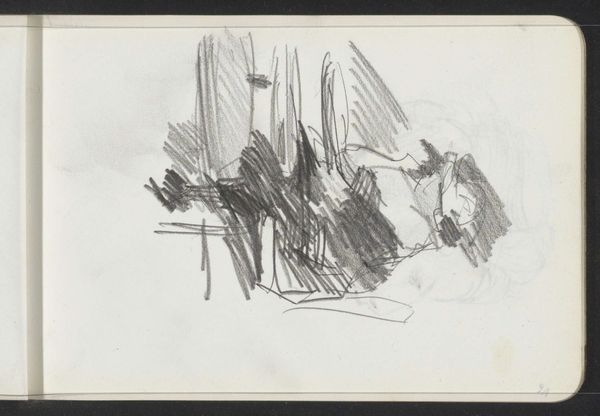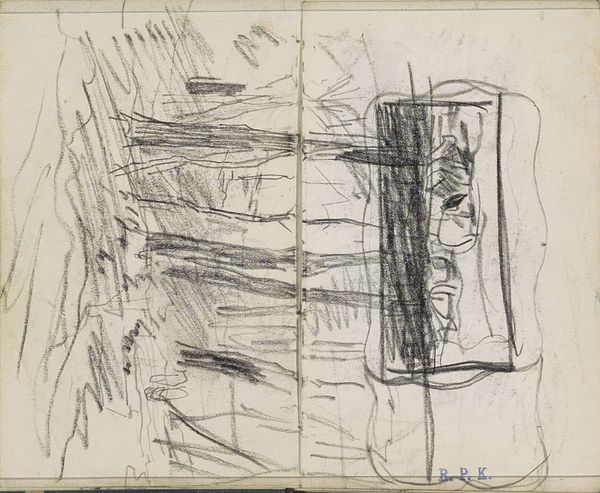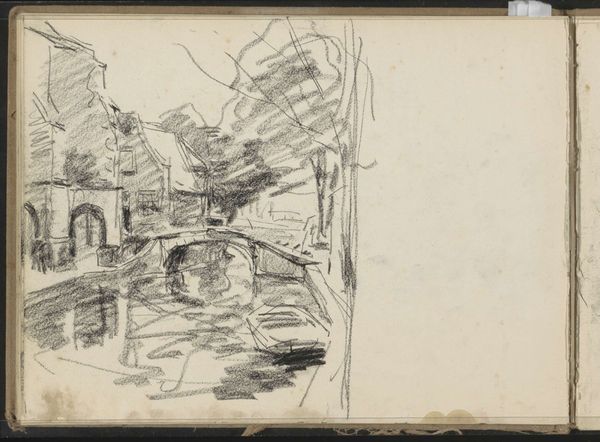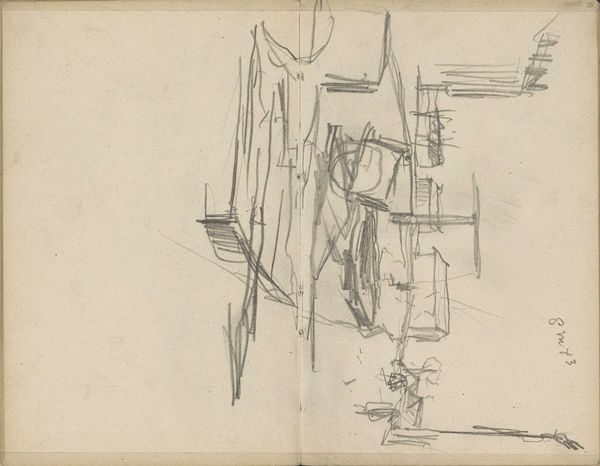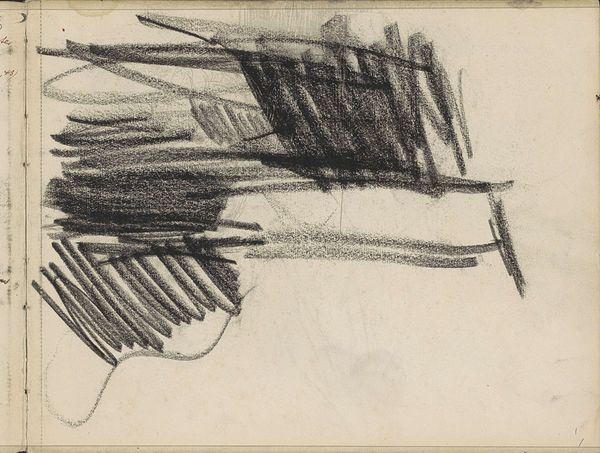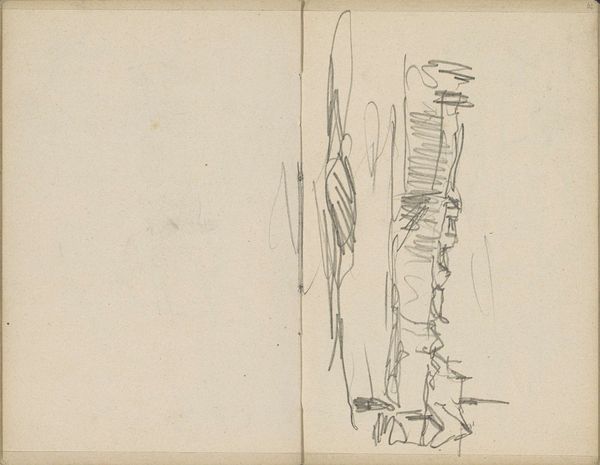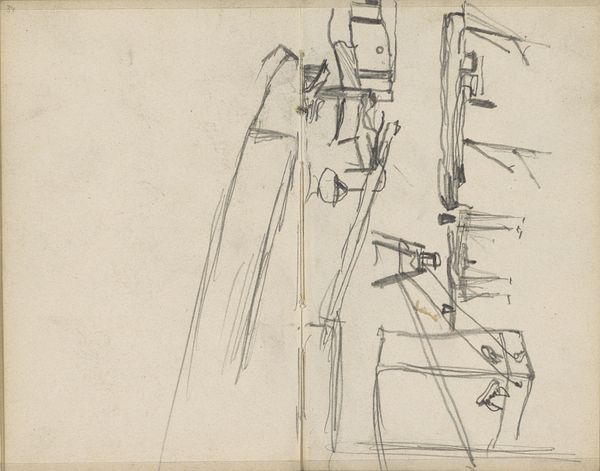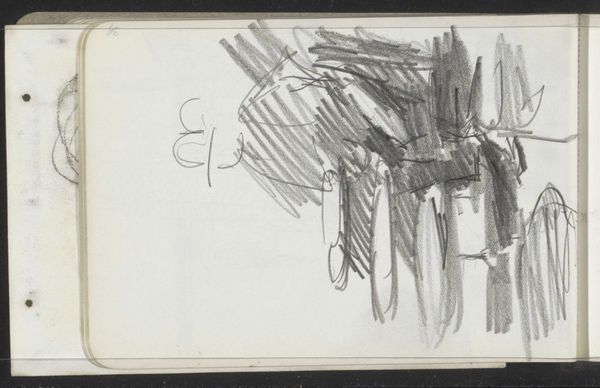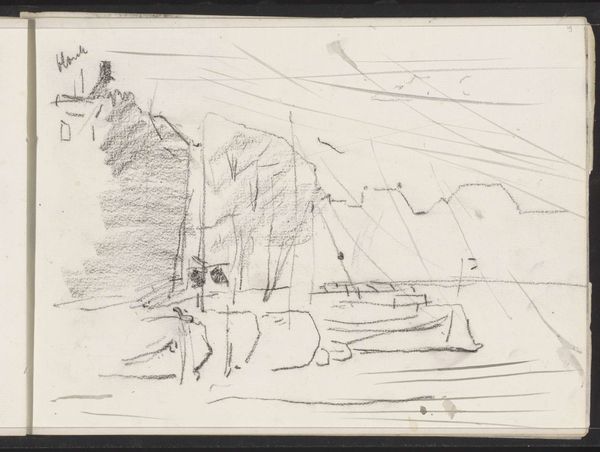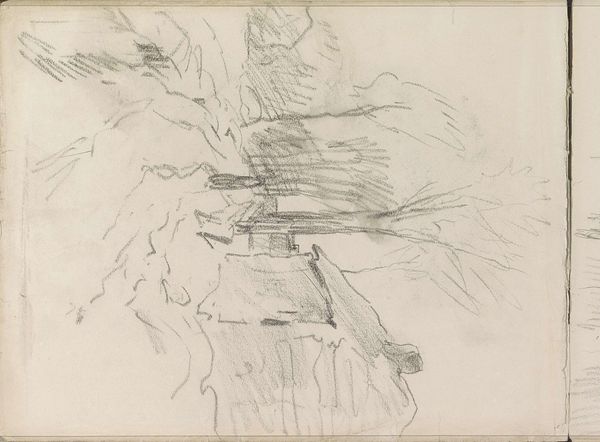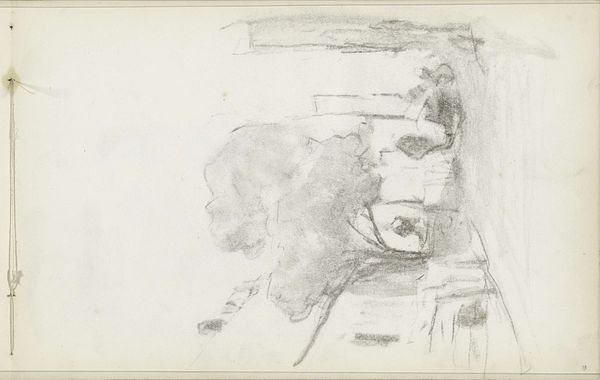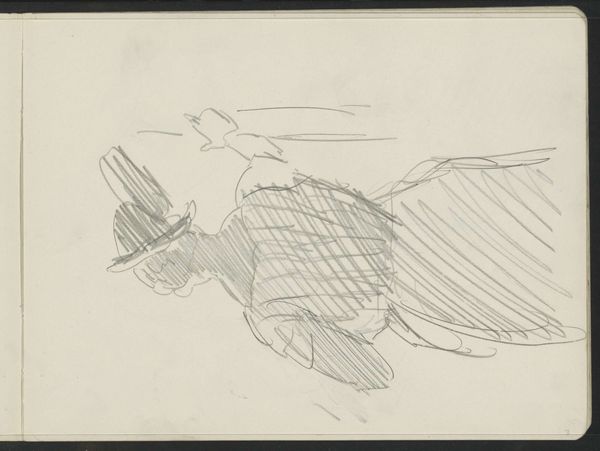
Copyright: Rijks Museum: Open Domain
Curator: Looking at this pencil drawing, "Vrouw op een verhoging," made by Isaac Israels around 1915 to 1925, currently residing at the Rijksmuseum, it strikes me as an exercise in capturing fleeting movement. Editor: My initial impression is that this is an unfinished idea. The composition is unsettling. I see a woman… or rather, I think I see a woman, perched or maybe lounging on something that is raising her? Is she comfortable or exposed? I wonder. Curator: The "something" is key here. Visually, it becomes a kind of symbolic throne, though roughly sketched. It places her, the woman, in a role of authority, yet that is undercut by her vulnerable pose. It creates a tension which many viewers at the time must have found unsettling. Editor: I can see that reading, though to my eye, it raises questions around access and perhaps precarity. How did she get on this 'verhoging,' this platform? What socio-economic structures enable or prevent different kinds of people from reaching such literal and figurative heights? Curator: Indeed, Israels was deeply engaged with representing the rapidly changing societal structure around him. What might seem an idle sketch may actually offer insights into cultural memory through the visual shorthands that defined how figures were socially positioned. The rapid pencil strokes themselves might suggest the speed of social change, don't you think? Editor: Potentially, although, for me, that evokes Impressionism more clearly. And thinking about that stylistic choice, perhaps her ill-defined status here serves a slightly different political role: highlighting the unstable ground of womanhood, given her context, in those times. It invites us to rethink societal definitions and limits imposed onto women who often weren't well represented or allowed any clear definition in professional practices or beyond the household. Curator: So, beyond its seemingly simple lines, the artwork becomes a layered commentary on status and societal expectations in flux. Its symbols invite more questions than they resolve. Editor: Agreed. And by remaining somewhat unfinished, Israels avoids any sort of authoritarian reading. This gives a power, though very gestural and unfinished, to that woman placed high and unstable on a platform, who now carries an empowering question in the mind of contemporary viewers, such as myself.
Comments
No comments
Be the first to comment and join the conversation on the ultimate creative platform.
